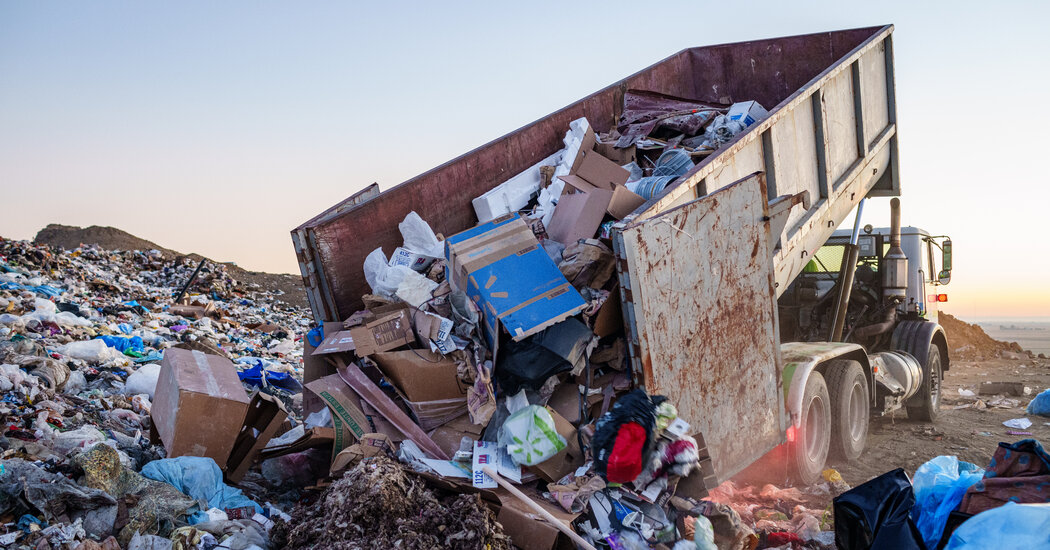Decades of buried trash is releasing methane, a powerful greenhouse gas, at higher rates than previously estimated, the researchers said.
They’re vast expanses that can be as big as towns: open landfills where household waste ends up, whether it’s vegetable scraps or old appliances.
These landfills also belch methane, a powerful, planet-warming gas, on average at almost three times the rate reported to federal regulators, according to a study published Thursday in the journal Science.
The study measured methane emissions at about 20 percent of about 1,200 large, operating landfills in the United States. It adds to a growing body of evidence that landfills are a significant driver of climate change, said Riley Duren, founder of the public-private partnership Carbon Mapper, who took part in the study.
“We’ve largely been in the dark, as a society, about actual emissions from landfills,” said Mr. Duren, a former NASA engineer and scientist. “This study pinpoints the gaps.”
Methane emissions from oil and gas production, as well as from livestock, have come under increasing scrutiny in recent years. Like carbon dioxide, the main greenhouse gas that’s warming the world, methane acts like a blanket in the sky, trapping the sun’s heat.
And though methane lasts for a shorter time in the atmosphere than carbon dioxide, it is more potent. Its warming effect is more than 80 times as powerful as the same amount of carbon dioxide over a 20-year period.
